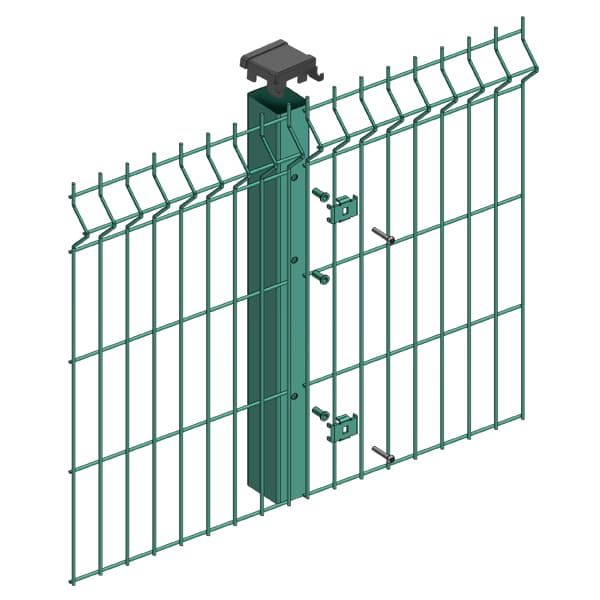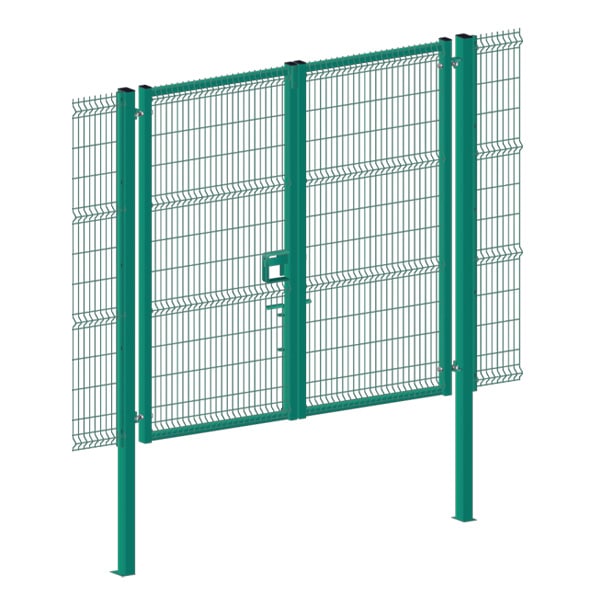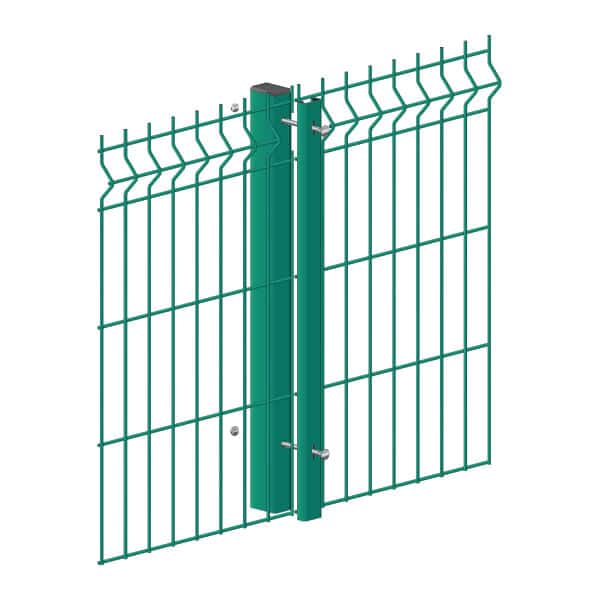Published:
V-mesh fencing, also known as V-wire or V-guard fencing, includes any type of welded wire mesh fence with a “V” shape in its structure.
While this fence type is known for its security, it’s important to note that not all V-mesh fencing is created equal. There are different V-mesh fencing levels and specifications, each designed to meet varying security needs. Simply being labelled as “V-mesh” does not automatically make a fence “security rated.”
How V-Mesh Fencing Works
The design of these fences serves multiple security purposes. The shape makes climbing difficult, as the small apertures are hard to grip. This deters potential intruders from attempting to scale the fence.
Additionally, you can see straight through a V-mesh fence, which means that no one can hide behind it. This visibility is a crucial aspect of security as it ensures that activities around the fence can be monitored easily.
Is All V-Mesh Fencing “Security Fencing”?
While all V-mesh fencing provides a certain level of security, it is important to note that cheaper variants may have vulnerabilities that make them less than ideal for certain applications. For instance:
- Aperture size: larger apertures can enable people to climb the fence.
- Thin wires: fences made with thinner wires can be easier to cut or break, making them less effective as a security measure.
- Low-quality clips: the clips used to secure the fencing can be a weak point, with low-quality clips facilitating tampering or even removal.
This means that different types of V-mesh fences should be chosen according to specific needs. Standard V-mesh fencing is suitable for general perimeter demacation, while Enhanced V-mesh fencing, with its thicker wires and tighter mesh patterns, is more suitable for areas requiring a security fence. Security-rated fencing, on the other hand, is designed to meet specific security standards and certifications and is used in critical infrastructure, military, and high-risk commercial applications. These fences include additional features like anti-climb measures, enhanced durability, and resistance to tampering.
So, the specific application of the fence will help determine the grade of V-mesh fencing required. For example, a school may require a different security level than a prison. Schools might prioritise preventing unauthorised access while maintaining an open and welcoming environment. In contrast, prisons require highly secure fencing to prevent escapes and ensure the safety of the surrounding community.
Security Rated Mesh Fencing
Security-rated mesh fencing is designed to meet higher standards of protection. This type of fencing is required in situations where the highest level of security is necessary, such as in prisons, military installations, and other high-risk areas.
Key characteristics that distinguish security-rated fencing include from standard v-mesh include:
- Enhanced wire thickness: security-rated fencing typically uses thicker wires than standard v-mesh, making cutting or breaking more difficult than its counterparts.
- Smaller apertures: smaller gaps in the mesh prevent climbing and make it harder to pass objects through the fence, including pliers or cutting tools.
- Robust fixings: high-quality clips and fixings ensure the fence cannot be easily dismantled or tampered with.
Security-rated fencing must pass rigorous tests to ensure its effectiveness. These tests assess the fence’s resistance to cutting, climbing, and overall durability under various conditions.
The most recognised standard for these tests is the Loss Prevention Standard (LPS) 1175, issued by BRE Global under the LPCB certification brand. This standard evaluates physical security products, including fencing, for their resistance to manual forced entry.
The testing process for LPS 1175 involves classifying products based on two main criteria: the threat level and the delay time. The threat level is designated by a letter (A to G) corresponding to the types of tools used by attackers, ranging from simple hand tools to more sophisticated power tools. The delay time is a numeric value (1, 3, 5, 10, 15, or 20) indicating the minimum number of minutes the product can withstand an attack. For example, a product rated as E5 must resist entry for at least five minutes against attackers using toolset E.
These tests simulate real-world attack scenarios to ensure the fencing provides adequate protection. The results and information help buyers choose the appropriate level of security for their specific needs, whether for a low-risk area like a school or a high-risk site like a critical infrastructure facility.








